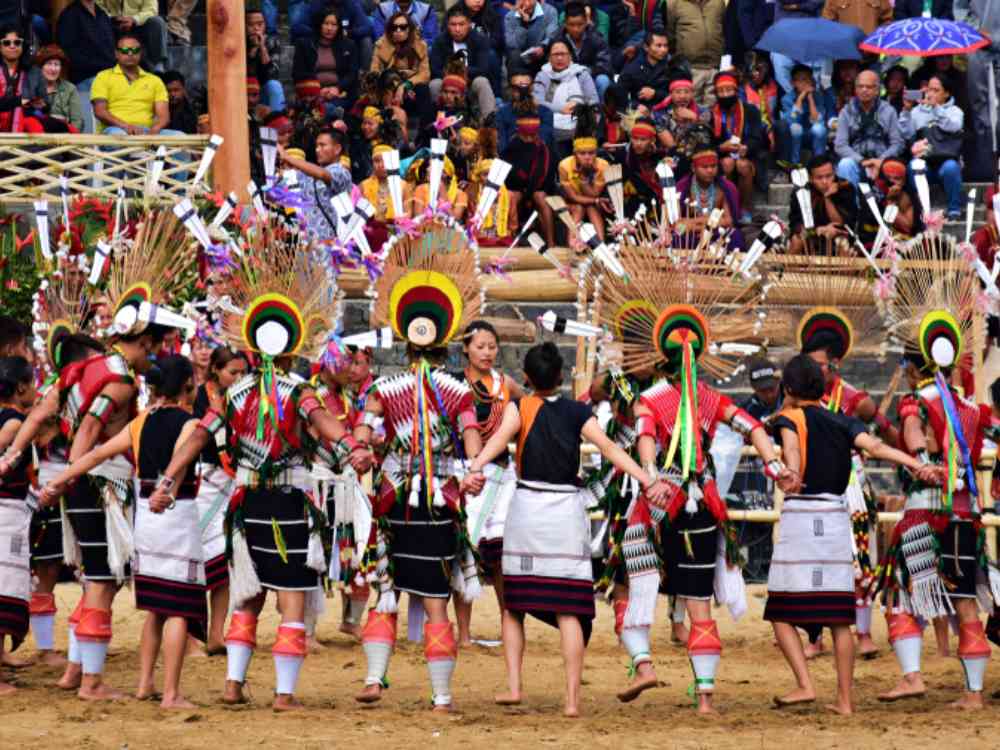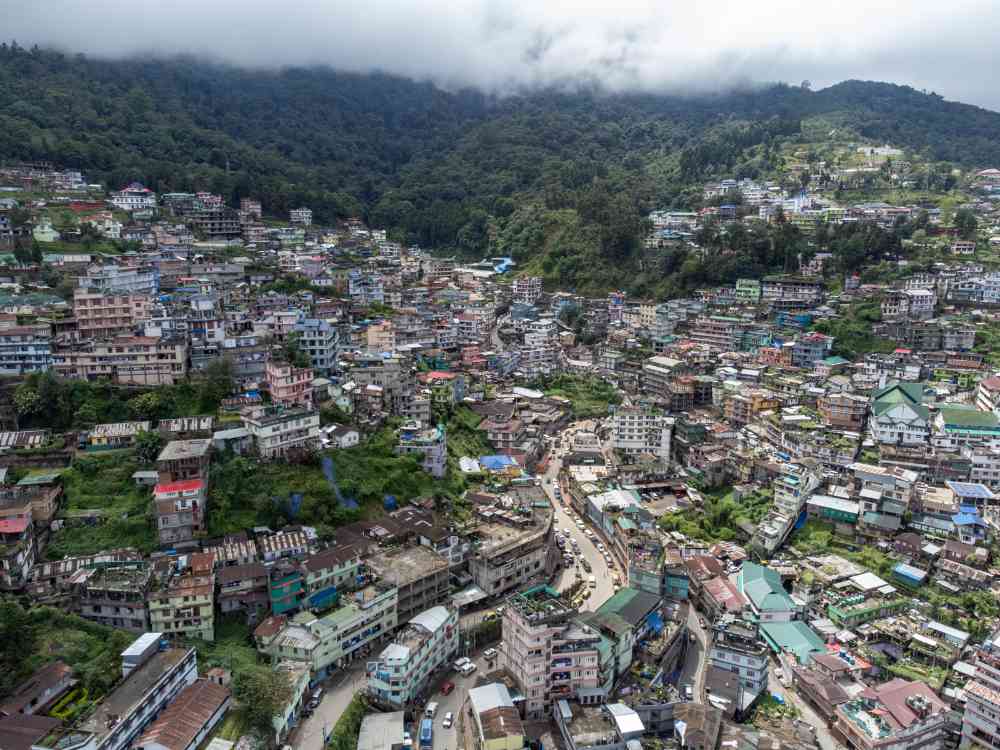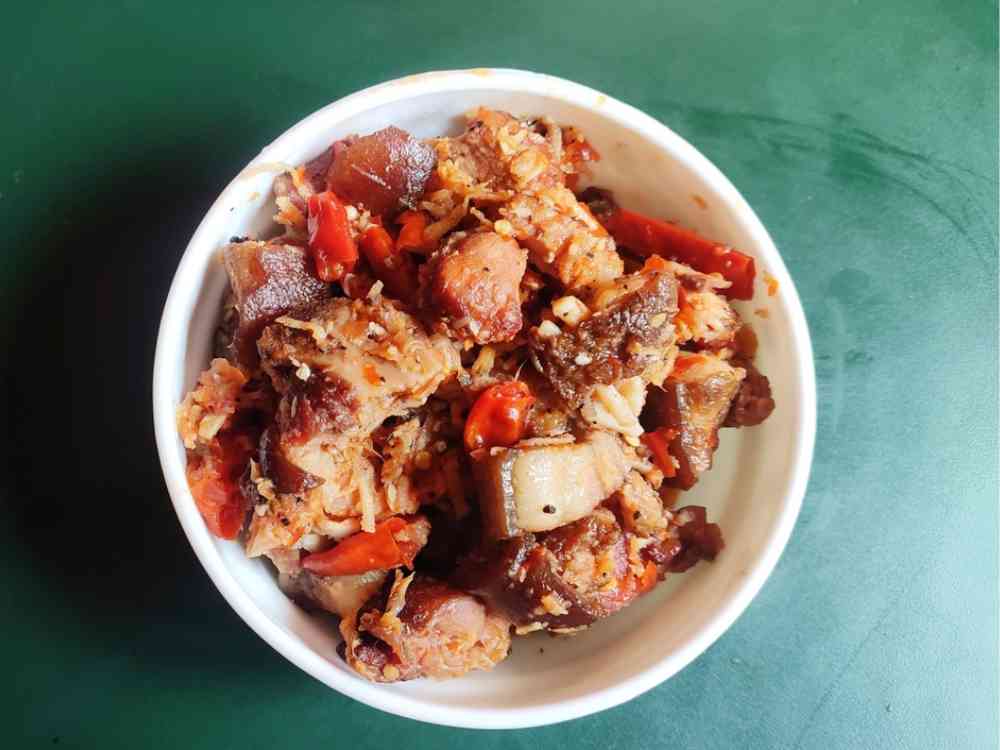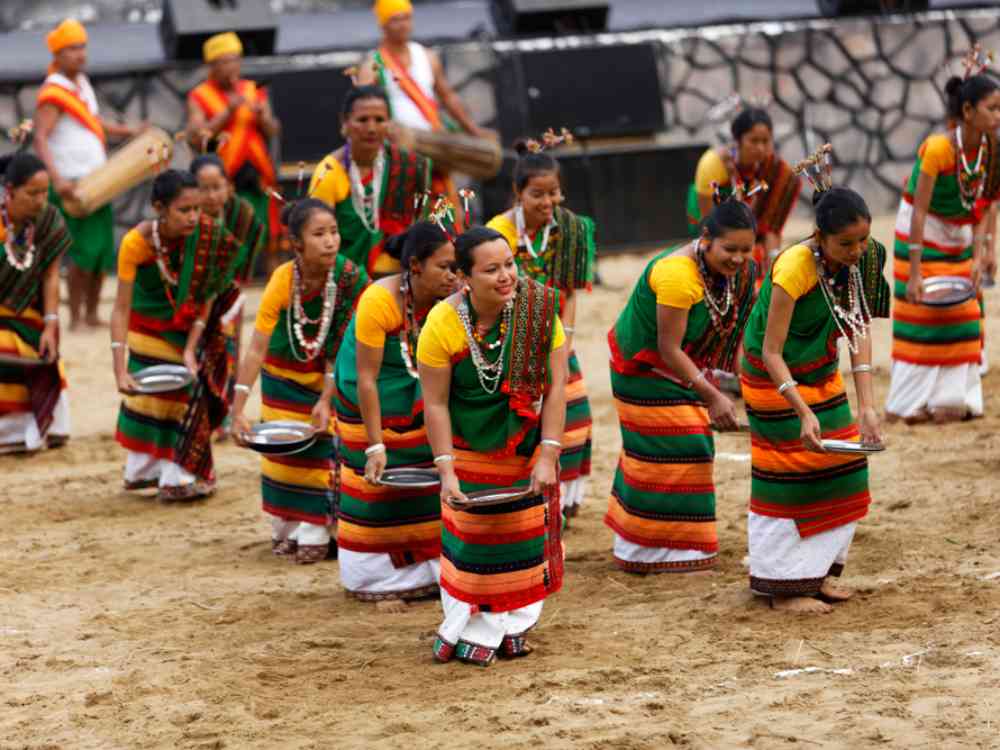The unique festival that unites Nagaland and attracts thousands of tourists each year is finally here, this time with even more twists and surprises. Nagaland known as the land of festivals is preparing to mark the 25th anniversary of the famous Hornbill Festival from December 1 to 10 at Naga Heritage Village Kisama. The Tourism Department of Nagaland is ready for the grand celebration of the festival’s silver jubilee. The annual Hornbill Festival of Nagaland, which is organized by the State Government, began in 2000 and was initially held for 3 days at Kohima Local Ground in the capital city. By the mid-2000s, the festival was moved to its current location at Naga Heritage Village Kisama, situated approximately 12 kilometers south of National Highway-29 on the Nagaland-Manipur road. Kisama is designed to resemble the map of Nagaland, with traditional Naga huts called morungs built to represent the different tribal districts.
Dr. G. Hukugha Sema, Commissioner and Secretary of Tourism in Nagaland, expressed excitement about the upcoming festival, describing it as a major event. He noted that the tribal groups discussed their perspectives and issues they encountered in preparation for the festival, including problems like lack of water, and electricity, poor network connectivity, and financial limitations.
During a consultative meeting at the Tourism Department’s Conference Hall, Commissioner and Secretary for Tourism G Hukugha Sema emphasized the significant impact of this year’s festival, as it has successfully attracted global attention in a remarkable way.
History of Hornbill Festival Nagaland

The Hornbill Festival kicked off in 2000 as a small three-day event in Kohima. Over time, the festival has transformed into a prominent tourism attraction for Nagaland, lasting for 10 days. During this period, guests can immerse themselves in tribal culture, cuisine, ancient pastimes, music and dance performances, and a showcase of local crafts and fabrics. The venue was relocated to Kisama in the mid-2000s, accommodating a larger number of visitors. Today, if Nagaland is recognized as a travel destination in India, credit must be given to the Hornbill Festival over the past 25 years.This year marks the commemoration of this achievement.
Importance of the Hornbill Festival
This is a major cultural event put together by the government of Nagaland to boost the state’s tourism. It offers a glimpse into the various indigenous groups of Nagaland. There is also a showcase of Naga Morungs during the festival. The event honors the Hornbill, a highly respected bird among the Nagas because of its vigilance and beauty.
Inner Line Permit for Hornbill Festival
Inner Line Permit is a necessary document for both domestic and international travelers visiting Nagaland. It can be easily requested online on the official website or by visiting the appropriate office in person. Tickets for the festival can be purchased at the entrance of Kisama Heritage Village for a price range of INR 40-60 per pass. Additionally, there is an extra charge for using a camera at the venue, which is around INR 50.
How to reach Hornbill Festival

By Flight: Air transportation in Nagaland is facilitated by an airport located in Dimapur, serviced by leading airlines. Flights to Kolkata and Guwahati are available, as well as direct flights to Delhi. Upon landing in Dimapur, tourists must continue their journey to Kohima by road, which typically takes around 2 hours.
By Road: The state is well-connected with a network of roads. The state capital of Kohima has links to important cities like Shillong and Guwahati in the northeastern region of India. Start your journey by heading to Dimapur before making your way to Kohima.
By Train: Dimapur is the main railway station in the state and has connections to Guwahati. Guwahati is linked to other parts of the country through a network of significant train services. Reservations for train tickets can be made online at www.irctc.co.in. Shared and private taxis are available from Kohima to the festival site in Kisama Heritage village, which is situated approximately 12 km away from Kohima.
Shared cabs and buses can be found at the Network Bus Station, also known as the Network Travels AOC Bus Stop. This station offers transportation options to Kisama as well as other nearby villages such as Kigwema, Vishwema, and Zakhama.
Cuisines of Hornbill

Traditionally, every Naga family has smoked meats hanging over the kitchen fire to add a special, flavorful touch. Naga cuisine often features pork with Axone (fermented soybean) for a distinct taste or mixed with bamboo shoots for a natural flavor.
If you like spicy food, be sure to try meat with Naga chilli (Raja Mircha). The selection of pickled foods at the event is truly impressive. Beef, chicken, pork, and fish are all available in pickled form, prepared using a wide range of methods and styles.
Rice beer is a popular choice at Naga celebrations, enjoyed in tall bamboo glasses at various food stalls in the area. The fruity flavors of Zutho and Thutse are a must-try for visitors. bLocal Wines can be found in the surrounding area of Heritage Village, where vendors offer a diverse selection of homemade wines. The assortment includes unique flavors such as raspberry, kiwi, blackberry, and grape, to name a few. Local fermented fruit juices, such as plum, gooseberry, black cherry, and peach, are excellent choices for those interested in sampling non-alcoholic beverages from the region.
Things to do in Hornbill Festival

Cultural exhibitions: The Hornbill Festival offers a unique opportunity to learn about the diverse cultural heritage of Nagaland. Different Naga tribes showcase their traditional dances, music, age-old games, and methods of combat.
Display of Naga morungs: Naga morungs are traditional huts that were historically used as communal living spaces. These structures served as platforms for passing down customs, traditions, and martial skills to young men. The festival includes replicas of these morungs. Naga wrestling and indigenous sports are highlights of the festival, alongside bamboo stilt races and archery competitions.
Craft: The festival includes a vibrant marketplace where local artisans showcase and sell Naga handloom products, bamboo crafts, and unique tribal jewelry. One of the festival’s main attractions is the Hornbill International Rock Contest, drawing rock bands from India and around the world to compete and entertain the crowds.
Experience the true essence of Hornbill Festival…




